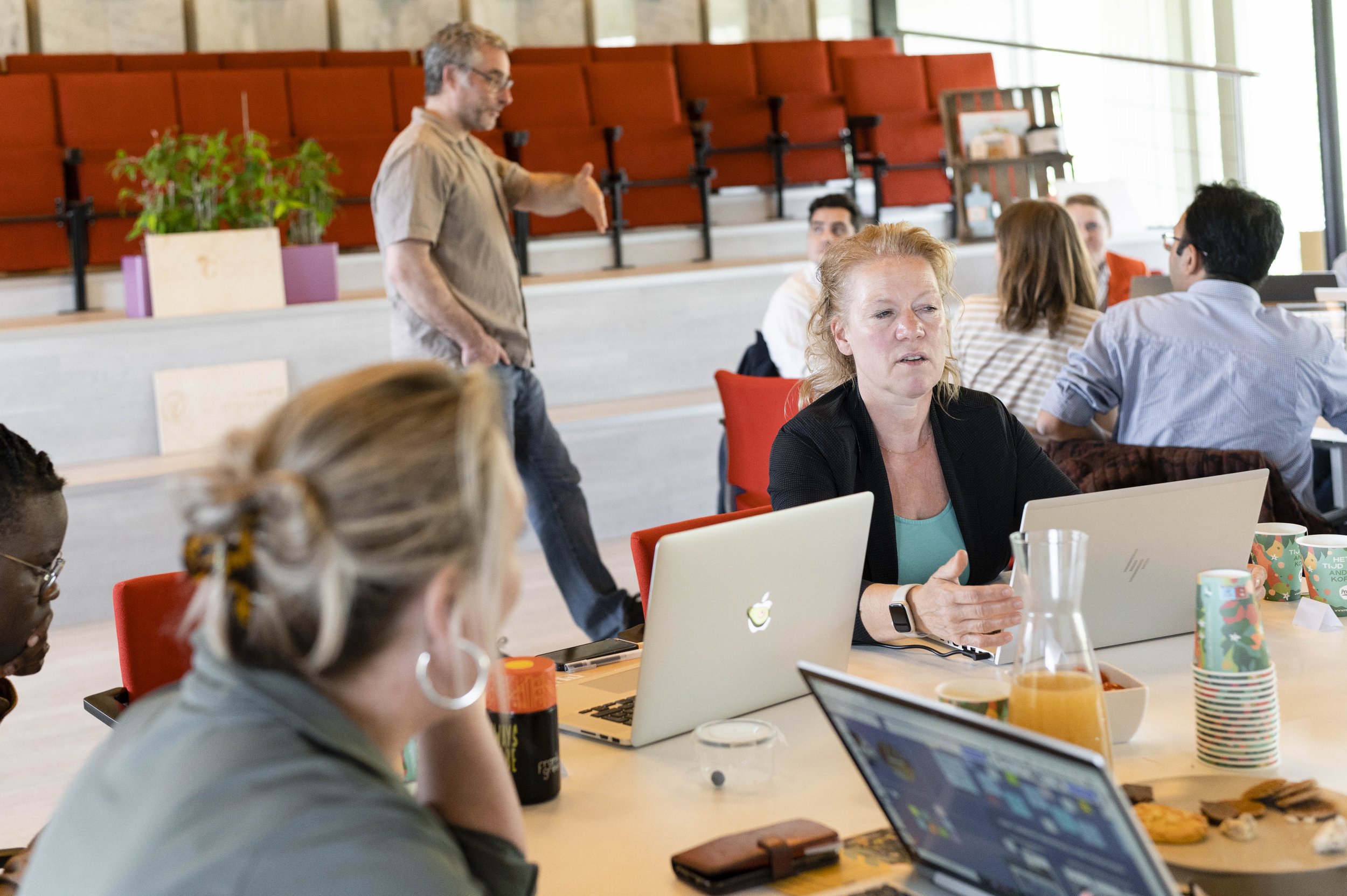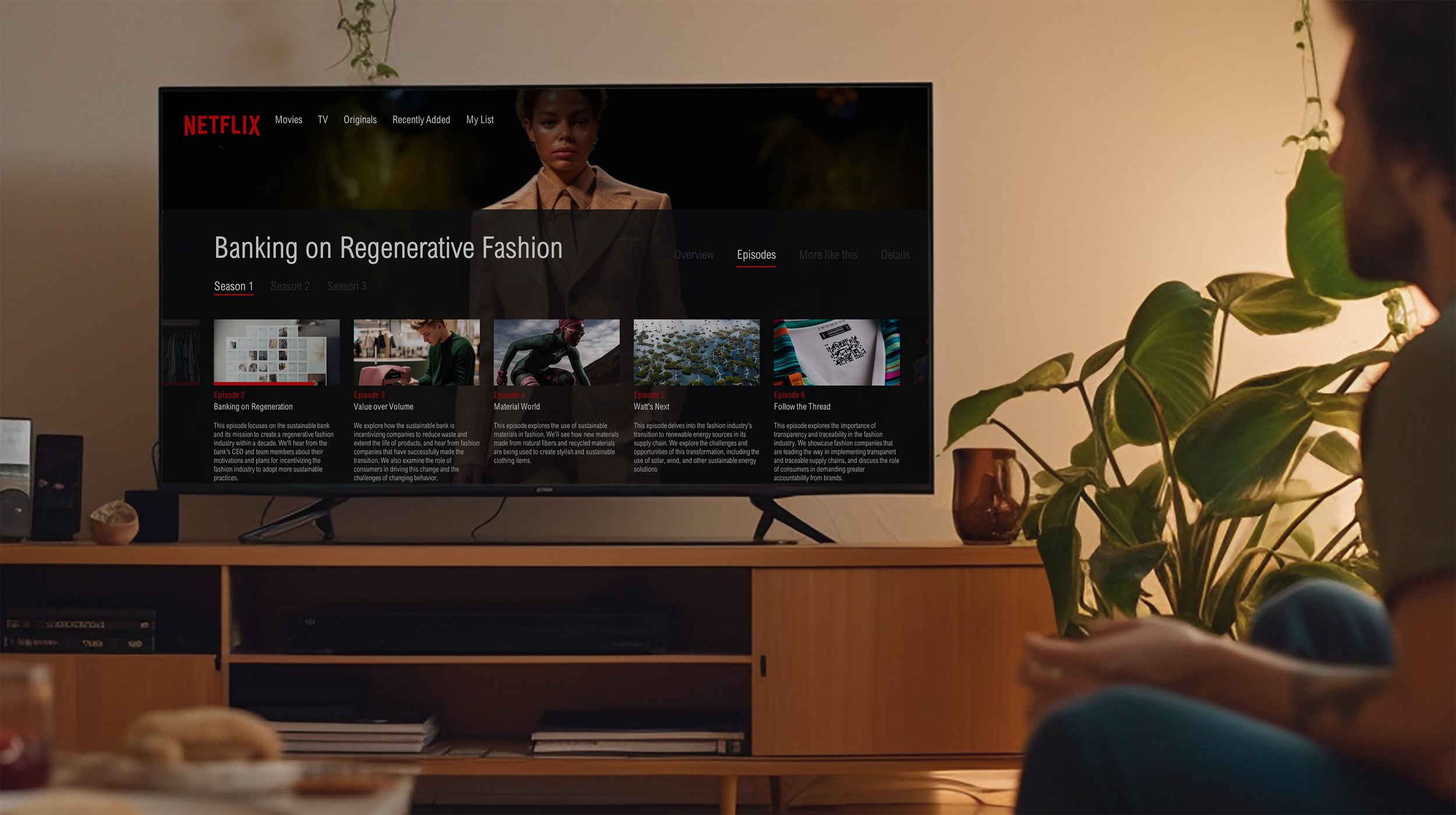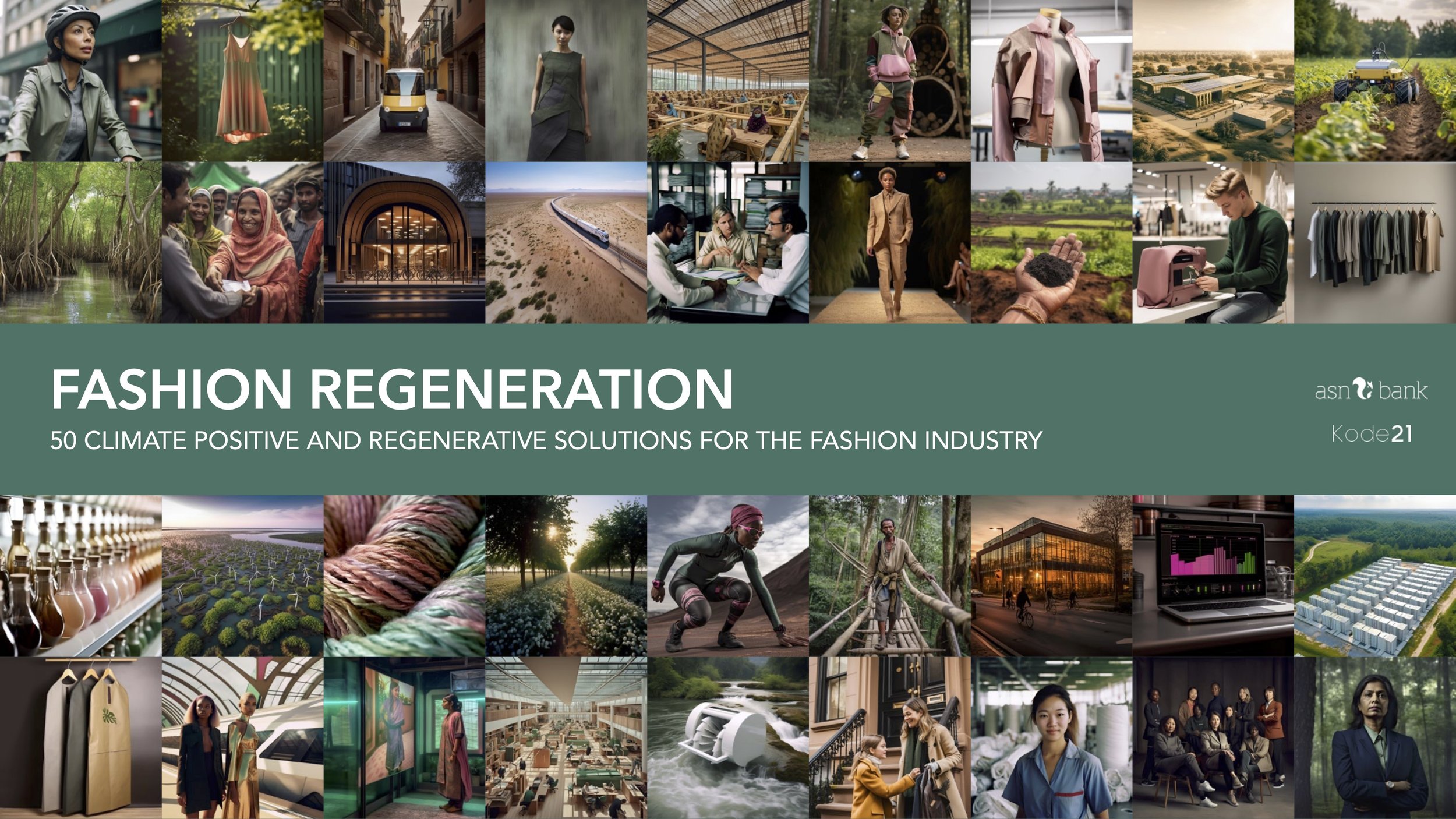
ASN Bank’s Fashion Regeneration
50 climate positive and regenerative solutions for the fashion industry
ASN Bank and ASN impact investors have a strong track record when it comes to the promotion of fair wages and sustainable practices in the fashion industry. But as their goal is to become climate- and nature positive in 2030, a new step in ambition is needed. When ASN Bank came to Kode21 with that dilemma, we proposed to investigate what a regenerative fashion industry would look like. A fashion ecosystem that is not just ‘less bad’ but that, in the balance, has a positive impact on climate, nature and people.
The surprise is, perhaps, that it can be done. Not in a blue sky, science fiction-y way, but by implementing dozens of solutions that are possible today, have scientific backing, and make business sense. In the Fashion Regeneration project, we have curated 50 solutions that can set fashion on the track of regeneration. We give a glimpse below, but the full set can be found in our report and is bound to give you some surprises.
Fashion Regeneration is Kode21’s first project where all visualisations were created using Artificial Intelligence. While we are aware of the controversies, we found that this tool allows us to hit a powerful balance between realism and optimism.
Note: all illustrations shown here and in the report have been generated through artificial intelligence.

Fashion’s Business Model
There are many promising technical solutions to the myriad problems of the garment industry, and we will discuss those. But the inconvenient truth is that the fashion industry will have to move beyond its business model of ‘produce as much as possible, as cheaply as possible, as fast as possible’ in order to enjoy fashion within planetary boundaries. Our clothes will once again have to last longer and be used better - much like in a not-too-distant past.
The creative challenge to the industry is to design enticing, exciting customer experiences that don’t depend on the rush of ever more impulse buys. Can those fleeting contacts be replaced by lasting, meaningful customer relations? Can we be delighted by a pre-loved piece, a brilliant repair and even an end-of-life collection experience? If a brand truly wants to be part of the solution it will have to convince on all of these aspects.
Biobased, Recycled and Reduced Materials
60% of all textiles are made from oil. Yes, read that again. In the absence of a perfect recycling system - and there’s no sign of that on the horizon - this is an untenable situation. We simply don’t know how to use fossil materials without causing emissions in production, microplastics in use, and landfill or even more emissions at the end of their life. If the fashion industry is serious about becoming carbon neutral, let alone regenerative, it will eventually need to shift all of its virgin inputs (back) to natural materials.
Cotton can be grown in much better ways using regenerative, ‘carbon farming’ methods or just by vastly reducing the required inputs of water, pesticides and fertilizers. Alternative fibers such as hemp, flax, nettle and kenaf can be grown in a range of climatic conditions while restoring degraded soils. And high tech MMCF (man made cellulosic fibers) and bioplastics can be made from farm waste or fast-growing perennials - turning our clothes into a type of carbon storage.
The shift to natural materials must come with strict conditions though, or we risk making things worse. It must be accompanied by a reduction of virgin material use, or more deforestation may result. And we will need improved farming practices to avoid even more emissions, water use and pollution. If done right, the reward will not just be clean materials, but also more, better and healthier farming jobs.
Renewable, Electrified and Reduced Energy
We might not be able to see if a sweater was made with coal or with photovoltaics. But decarbonized energy in the supply chain will not just bring us closer to ‘net zero’ - it will also drastically reduce air pollution, improve the health of workers, save cash in the long run and create new employment opportunities.
The energy transition in the fashion world, as anywhere, entails a lot more than just building wind and solar farms - think geothermal, small hydropower or tidal power. On top of that, we also need grid improvements, energy storage and electrification of many processes that currently rely on coal and gas.
Even the care of our clothes and the way we buy them, influences energy use. And can we look even further? Can low carbon transport improve lives? Can comfortable worker housing become part of a clean, autonomous microgrid?
Transitioning the fashion world to clean, renewable energy will be a gargantuan task - but there is no alternative, and the potential benefits are immense.
People, Nature, Transparency
We have only discussed the main categories for creating positive ecological impact, and there is much more to be said. Tens, perhaps hundreds of millions of women have been taken out of conditions of absolute poverty through fashion - but much more must be done to ensure fair and safe working conditions and equal representation at all levels.
Nature is an intrinsic part of the fashion value chain, through ecosystem services and even the protection it gives from climate change-induced threats. Protecting it is crucial, and more than just philantropy.
And we need better labels and standards, digital product passports and True Prices to provide transparency on fashion’s impacts and create a level playing field for positive actors.
A Call to Action
This is not the end of the road - but rather, the very beginning. We have a picture of where we want to go - and now have to find and create the means to get there. For ASN Bank and ASN Impact Investors, this means that the results of the project will be used to define and refine policy in the textile sector. This can mean creating more clarity and focus in their investments. But it could also lead to the development of new metrics for regenerative fashion, the fostering of better cooperation in the sector, the development of a regenerative toolbox or the creation of public-facing materials - to name but a few possibilities.
If you have comments on or questions about the report, ideas for how to speed up the implementation of these regenerative solutions by ASN Bank, or are intereste in creating a similar plan for your own company or sector, don’t hesitate to reach out.


























